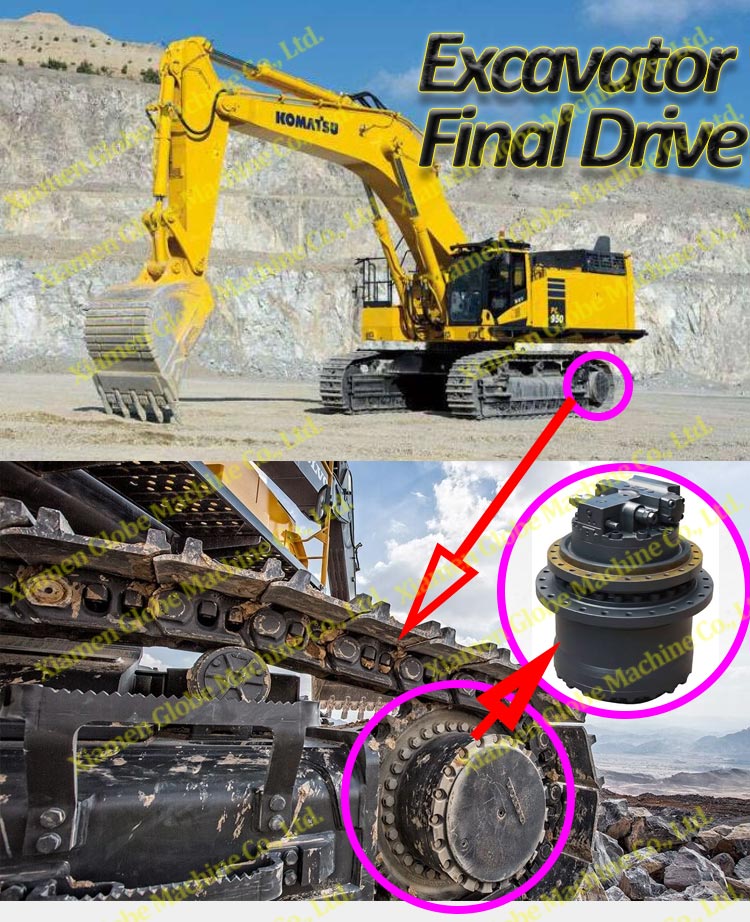The final drive is a critical component of an excavator’s travel and mobility system. Any malfunction here can directly impact productivity, machine health, and operator safety. As a machine operator or site manager, being aware of the early warning signs can help prevent serious damage and costly downtime. Below are several key indicators that may suggest a problem with the final drive:
Unusual Noises
If you hear grinding, whining, knocking, or any abnormal sounds coming from the final drive, it’s often a sign of internal wear or damage. This could involve gears, bearings, or other components. These noises should never be ignored—stop the machine and schedule an inspection as soon as possible.
Loss of Power
A noticeable drop in the machine’s driving force or overall performance could be due to a malfunction in the final drive unit. If the excavator struggles to move or operate under normal loads, it’s time to check for internal hydraulic or mechanical faults.
Slow or Jerky Movement
If the machine moves sluggishly or exhibits jerky, inconsistent motion, this could indicate an issue with the hydraulic motor, reduction gears, or even contamination in the hydraulic fluid. Any deviation from smooth operation should prompt further investigation.
Oil Leaks
The presence of oil around the final drive area is a clear red flag. Leaking seals, cracked housings, or improperly torqued fasteners can all cause fluid loss. Operating the machine without sufficient lubrication can lead to accelerated wear and potential component failure.
Overheating
Excessive heat in the final drive may stem from insufficient lubrication, blocked cooling passages, or internal friction due to worn parts. Consistent overheating is a serious issue and should be addressed immediately to prevent further damage.
Professional Recommendation:
If any of these symptoms are observed, the machine should be shut down and inspected by a qualified technician before further use. Operating an excavator with a compromised final drive can lead to severe damage, increased repair costs, and unsafe working conditions.
Proactive maintenance and early detection are key to extending the service life of your equipment and minimizing unexpected downtime.
Post time: Aug-06-2025





